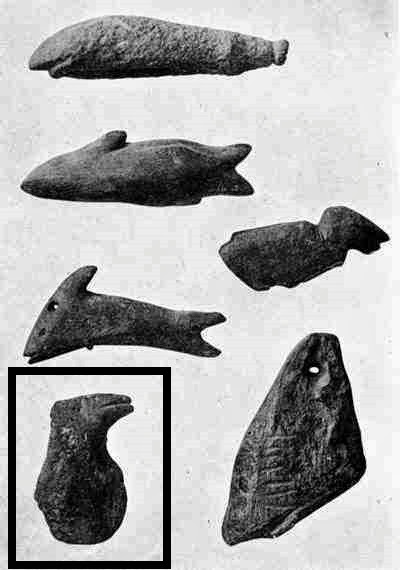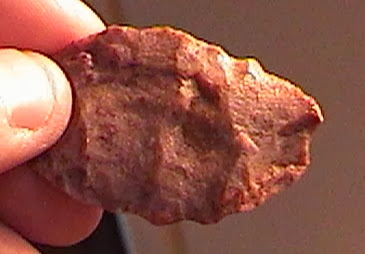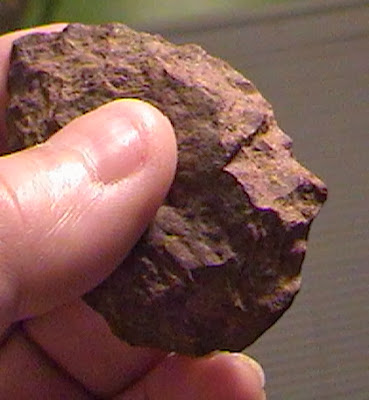Interpreted as "votive offering bird figures" from the Stonehenge site, courtesy The Open University
Photo plate with a frame around the Maine figure which has a striking similarity to the bird figures identified from Stonehenge by The Open University. Photo from "A Report on the Archaeology of Maine," Warren K. Moorehead, 1922.
125 years later, these words are very relevant to the new approach required for more thorough and meaningful portable rock art studies:
“… The museums are full of axes, celts, pipes, banner stones, discoidals, hematites, tubes, slate ornaments and ceremonials, pestles, hammers, etc. What the museums need (as of great value to Archaeological Science) are collections from a single locality including everything found in that locality. They want the finds of the village site, the studies in unfinished specimens, the poor and the good, the imperfect as well as the perfect. In this regard, the collectors make a great error. Most of them do not save everything but cling to the ‘pretty relics’ and discard the rough and the rude. Personally, I would give more for a collection, provided it contained all the types, all the finds of a certain valley than for just the fine, perfect objects of that valley. From a collection of the latter, I would be misled, for if I accepted it as indicative of the people of that valley, I would say they made the most beautiful works of aboriginal art, nothing rude or unfinished being turned out by their artisans. In such a statement, I would be unpardonably wrong.”
Warren K. Moorehead, 1884
Photo by The Open University, Stonehenge site stone bird figures
125 years later, these words are very relevant to the new approach required for more thorough and meaningful portable rock art studies:
“… The museums are full of axes, celts, pipes, banner stones, discoidals, hematites, tubes, slate ornaments and ceremonials, pestles, hammers, etc. What the museums need (as of great value to Archaeological Science) are collections from a single locality including everything found in that locality. They want the finds of the village site, the studies in unfinished specimens, the poor and the good, the imperfect as well as the perfect. In this regard, the collectors make a great error. Most of them do not save everything but cling to the ‘pretty relics’ and discard the rough and the rude. Personally, I would give more for a collection, provided it contained all the types, all the finds of a certain valley than for just the fine, perfect objects of that valley. From a collection of the latter, I would be misled, for if I accepted it as indicative of the people of that valley, I would say they made the most beautiful works of aboriginal art, nothing rude or unfinished being turned out by their artisans. In such a statement, I would be unpardonably wrong.”
Warren K. Moorehead, 1884


























eBPu+TzC6jg~~60_57+markup.jpg)

.jpg)








.jpeg)










.jpg)


+cropped+(1).jpg)



























.jpg)









